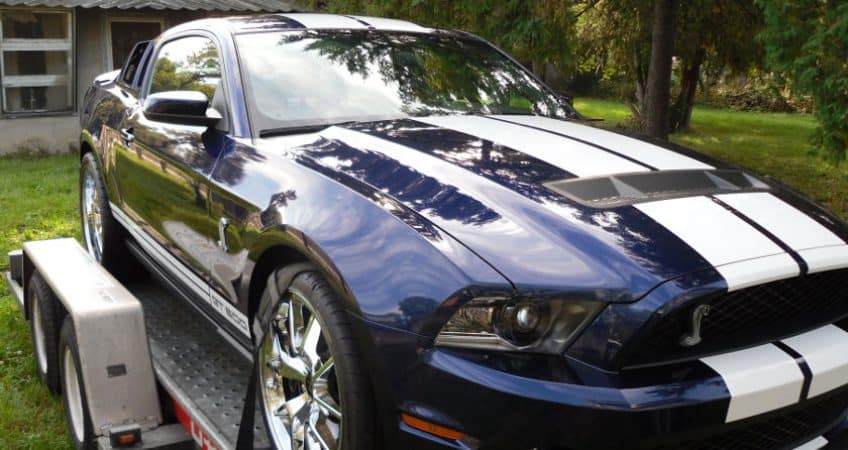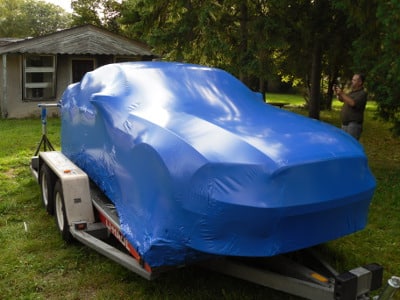Keep that Classic Car Good as New with Vehicle Wraps and Other Tips
Classic cars are incredible—part high-performance machine, part beautiful work of art, and part living piece of history. If you’re lucky enough to have your very own classic car, you can appreciate how much love and attention has gone into either preserving or restoring it, and you’ll do everything you can to keep it looking and running as close as possible to the day it came out of the factory. That means driving it regularly, using vehicle wraps and fuel stabilizer during storage, and more.
Since a classic car is such a valuable possession, it’s good to always be on the lookout for ways to keep it healthy. So, whether you’re a new owner or just looking for additional tips, here are some ways to make sure your classic car stays in top shape for years to come.
Keep Your Engine Healthy by Driving Often
A car isn’t a sculpture. As beautiful as that classic car might look sitting in your garage or on your driveway, it’s not where it’s meant to be—it’s meant to be out there on the road, serving its purpose and getting noticed while doing it.
That’s not the only reason to take your car out for a nice drive, though. It’s also good for the engine itself. Think of it like a person’s heart. Sure, you don’t want to overwork it by putting too much strain on it, but taking it through the motions of what it’s meant to do is healthy. Far from building wear and tear, it prevents blockages and corrosion, so that your car can stay in running condition. Not only that, but it’ll also be easier for you to identify any problems that the car has when you’re driving it than when it’s sitting idle in your garage.
Cleaning and Caring for a Classic Car
Of course, you also have to perform plenty of routine maintenance to preserve your classic car. After all, this is no ordinary vehicle. With a regular car, you can drive it as needed and worry about oil changes and other minor maintenance every once in a while, but not have to worry about it much overall. Yet that car is only expected to last you so many years. Five, ten… who knows? A classic car, on the other hand, you want to last a life time—and longer, if you plan to pass it on. That sort of longevity demands a maintenance regimen that goes far beyond what you’d normally give to a standard vehicle.
Here are a few main points to include on your maintenance checklist for your classic car:
- Oil Changes—This is your top priority, as checking and changing your oil and oil filter is the number one way to keep your motor running smoothly.
- Trans Fluid and Differential Oil Changes—New cars only need this done at their regular service intervals, but a classic car needs some special treatment. The more often you do this the better—and make sure you use the recommended transmission fluid, as well gear oil of the right viscosity.
- Lubing the Drive-Line and Ball Joints—These parts require regular lubrication to keep them in working order. Check components of the drive-line such as the u-joints to see that everything looks well-greased. You might have to remove it to get to the grease fitting depending on the car. You should also regularly check the ball joints, as a dry ball joint often fails before its time.
- Repacking the Wheel Bearings—At your regular service intervals, inspect and clean your wheel bearings and repack them with the recommended grease. It may take a while, but this is yet another cheap way to save big on repairs down the line.
- Pumping the Brakes—Test your brakes out regularly, keep an ear out for unusual noises, and make sure your brake pads aren’t wearing down your rotors unevenly. Brake systems and pads on a classic car are relatively cheap and easy to replace compared to calipers, hoses, and sensors.
- Flushing the Cooling System—This one doesn’t just apply to classic cars. Every vehicle should have its cooling system flushed at least once every year. The old coolant should be replaced with a half-and-half mix of coolant and distilled water. This prevents corrosion and deposits that can form blockages.
- Keeping It Clean, Inside and Out—Regular car washes and waxings are essential to preserving your classic car’s paint job. You should also clean the undercarriage, as removing the salt and grime will keep corrosion off of exposed parts.
- Protecting the Interior—First of all, don’t leave your car exposed to direct sunlight when not in use, as this can make your vinyl, leather, or plastic interior fade and dry out. Try some vinyl treatments, leather creams, or UV blockers to help preserve that classic interior.

Vehicle Wraps and Other Storage Tips
There are times when you may want to safely store your classic car somewhere for a while and not drive it for an extended period of time. Maybe you’re placing it in storage for the winter, or you’re getting ready to ship it to a car show across the country, or you’re keeping it safe while you save up or search for that part you need to get it running smoothly again. Regardless, you need to take precautions to keep your classic car safe while in storage.
The basics include:
- Changing the oil and greasing what needs to be greased
- Filling the tank with gas and fuel stabilizer to prevent gum and varnish buildup
- Raising your car on jack stands to prevent flat spots on the tires
- Stuffing the tailpipe to keep rodents out
- Connecting the battery to a maintainer to keep it charged and prevent freezing
However, one of the best things you can do for your classic car during storage is vehicle wraps. This is when you shrink wrap your car. While vehicle wraps are more commonly seen on boats, the same principles apply for cars—you want to store your vehicle, whether for winter or transport, and you want to keep it safe in the meantime.
Vehicle wraps are made from a durable material that gets shrunk with a heat gun, forming a drum-tight seal around your car. Unlike vehicle wraps, tarps leave space and moisture in between themselves and the car, creating the perfect environment for corrosion. They also are less resistant to the elements. If you’re leaving your car in storage, or shipping it cross-country on the back of a truck, you want it to be resistant to moisture, pests, dust, wind, rain, and more. Vehicle wraps will accomplish it all.
If you’re interested in using vehicle wraps to preserve your classic car, we recommend you hire professionals. We here at Unlimited Shrinkwrap have been performing shrink wraps including boat wraps, aviation parts wraps, and vehicle wraps in McHenry, IL and elsewhere in the Chicagoland area for years, and have the expertise necessary to get the job done right, without damage to your vehicle. Give us a call at (815) 759-8944, and we’ll help you keep your classic car looking and running like the day it was built!


